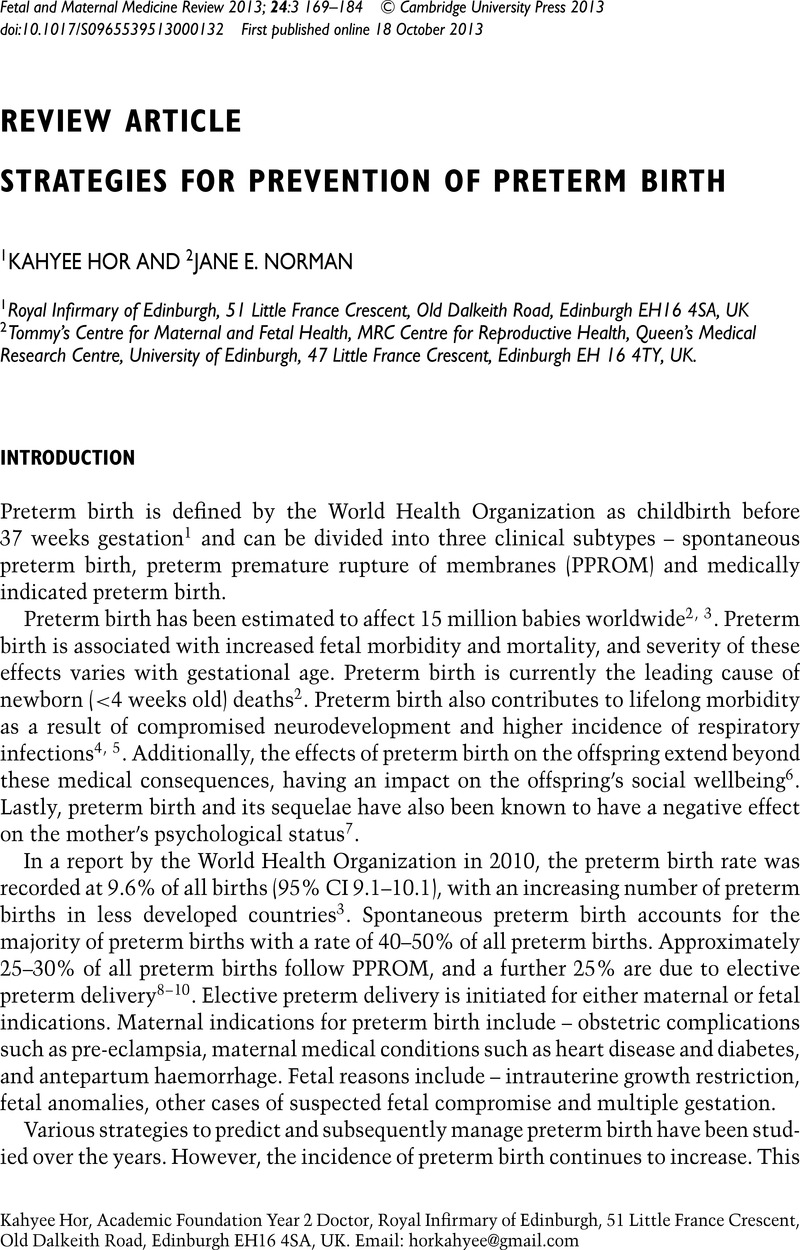Crossref Citations
This article has been cited by the following publications. This list is generated based on data provided by Crossref.
Whitaker, Eleanor
Murray, Sarah
and
Norman, Jane E.
2019.
Fetal Therapy.
p.
311.

Published online by Cambridge University Press: 18 October 2013
